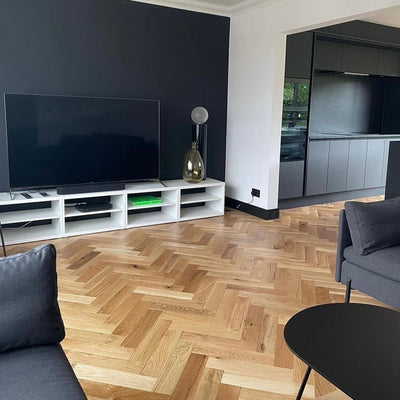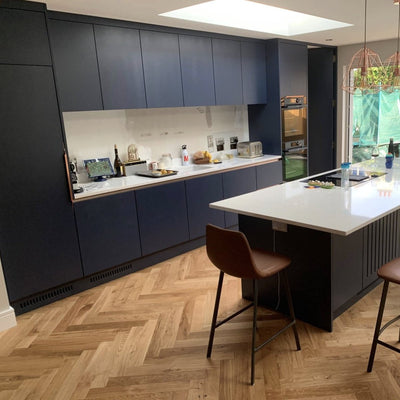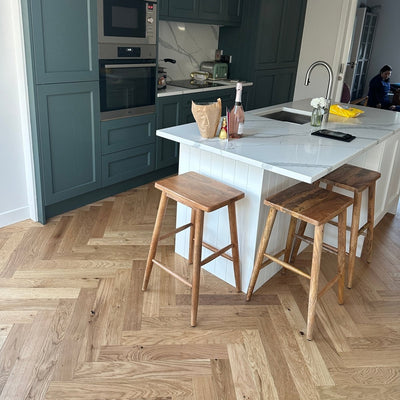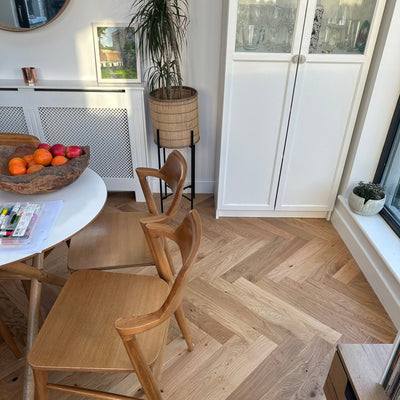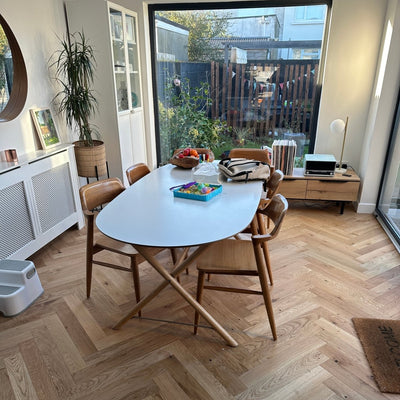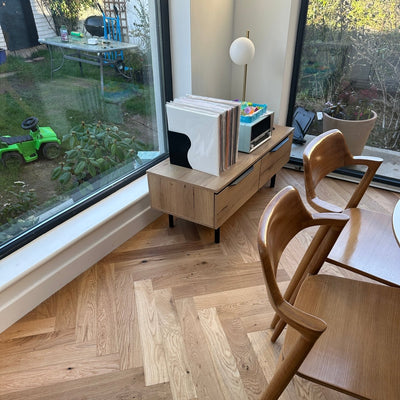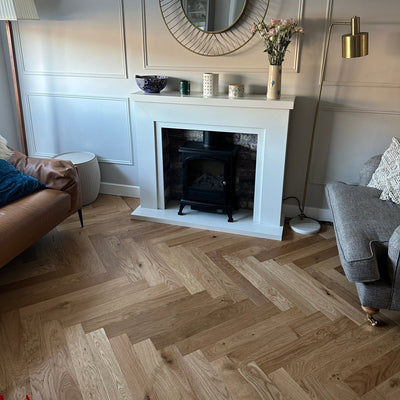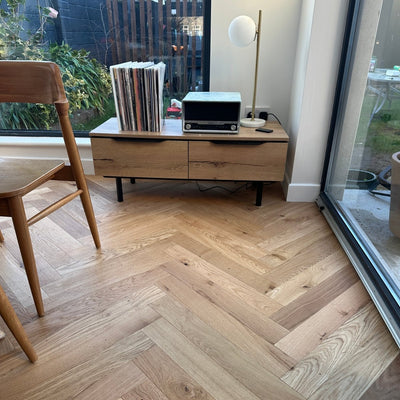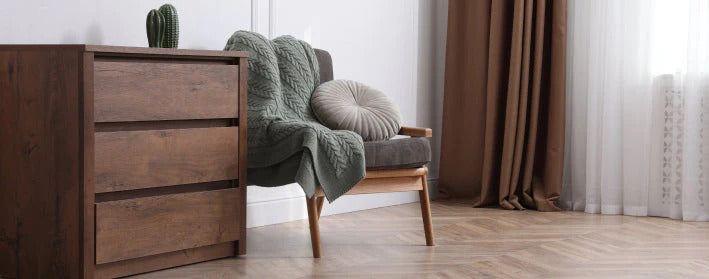The Brushed Oak Natural Herringbone engineered flooring in natural oak combines the warmth of real wood with the stability of modern design.
Part of the Konig Native range, it is crafted with a multilayer birch plywood base and a genuine oak wear layer, giving you the look and character of solid wood with added strength and stability. The brushed surface enhances the grain detail and natural texture, creating a timeless herringbone floor that brings warmth, depth and authenticity to any interior.
Durable and elegant, this floor is suitable for living rooms, kitchens and light commercial spaces, offering lasting performance and classic style in equal measure.
Description
- 3mm top layer
- Suitable for Heavy Domestic use
- Tounge and Groove System
- Suitable for Underfloor Heating
Specifications
- Length: 600mm
- Width: 90mm
- Thickness: 14mm
- Box Size: 1.62m sq
- Installation Method: Tounge and Groove
- Underfloor Heating: Compatible
- Finish: Matt
Product Features
- Water Resistant
- Scratch Resistant
- 3mm wear layer










